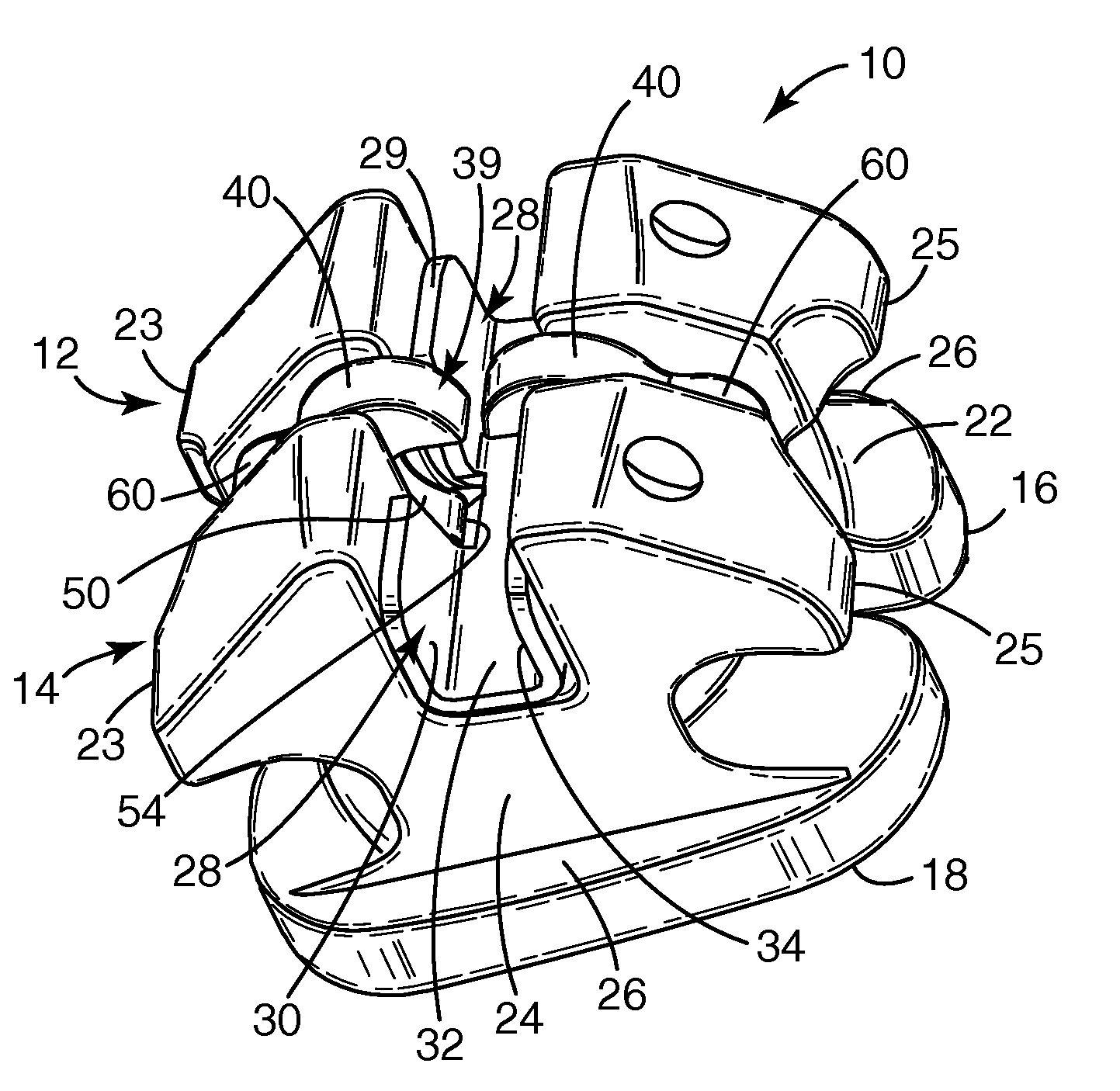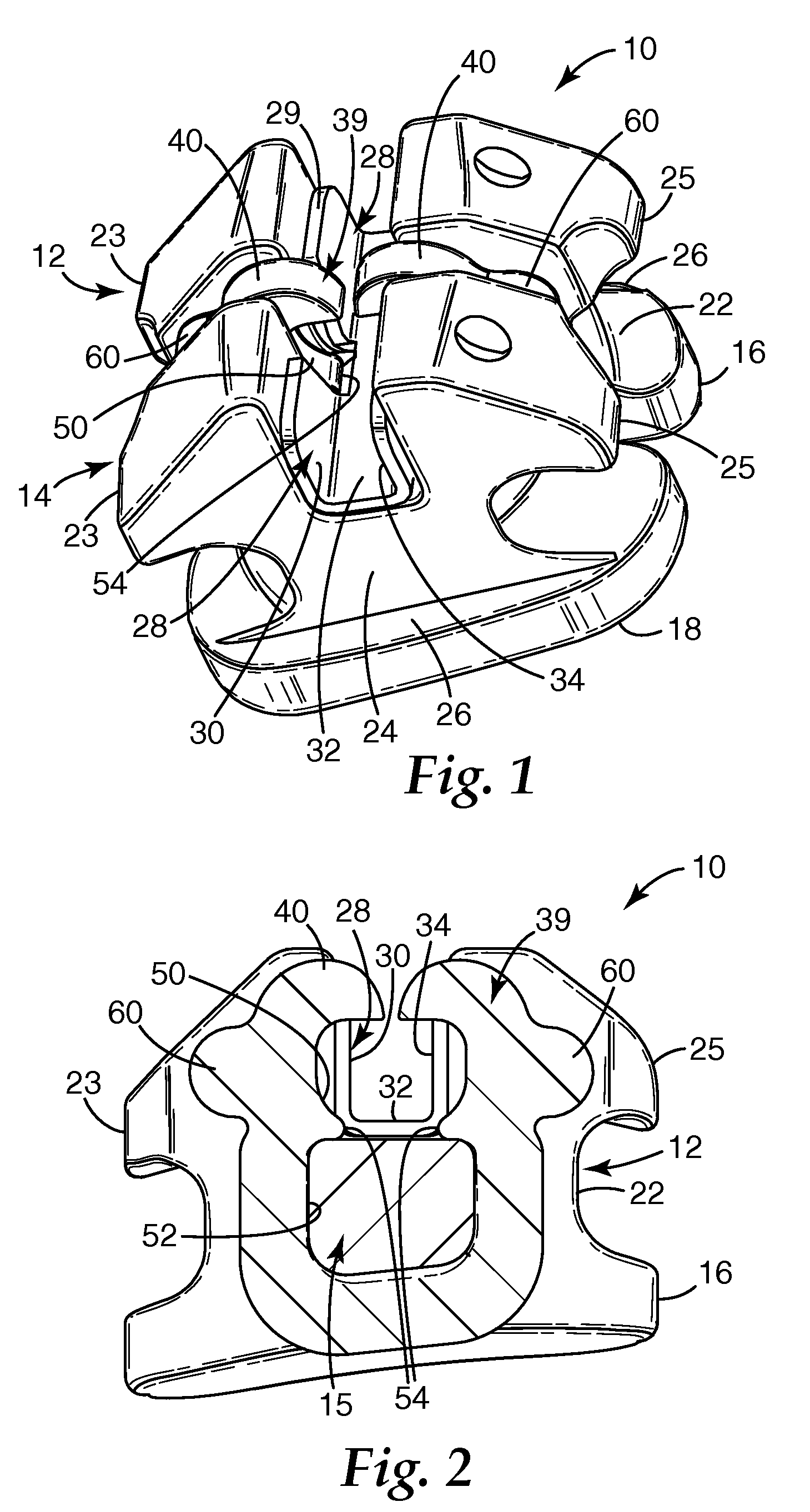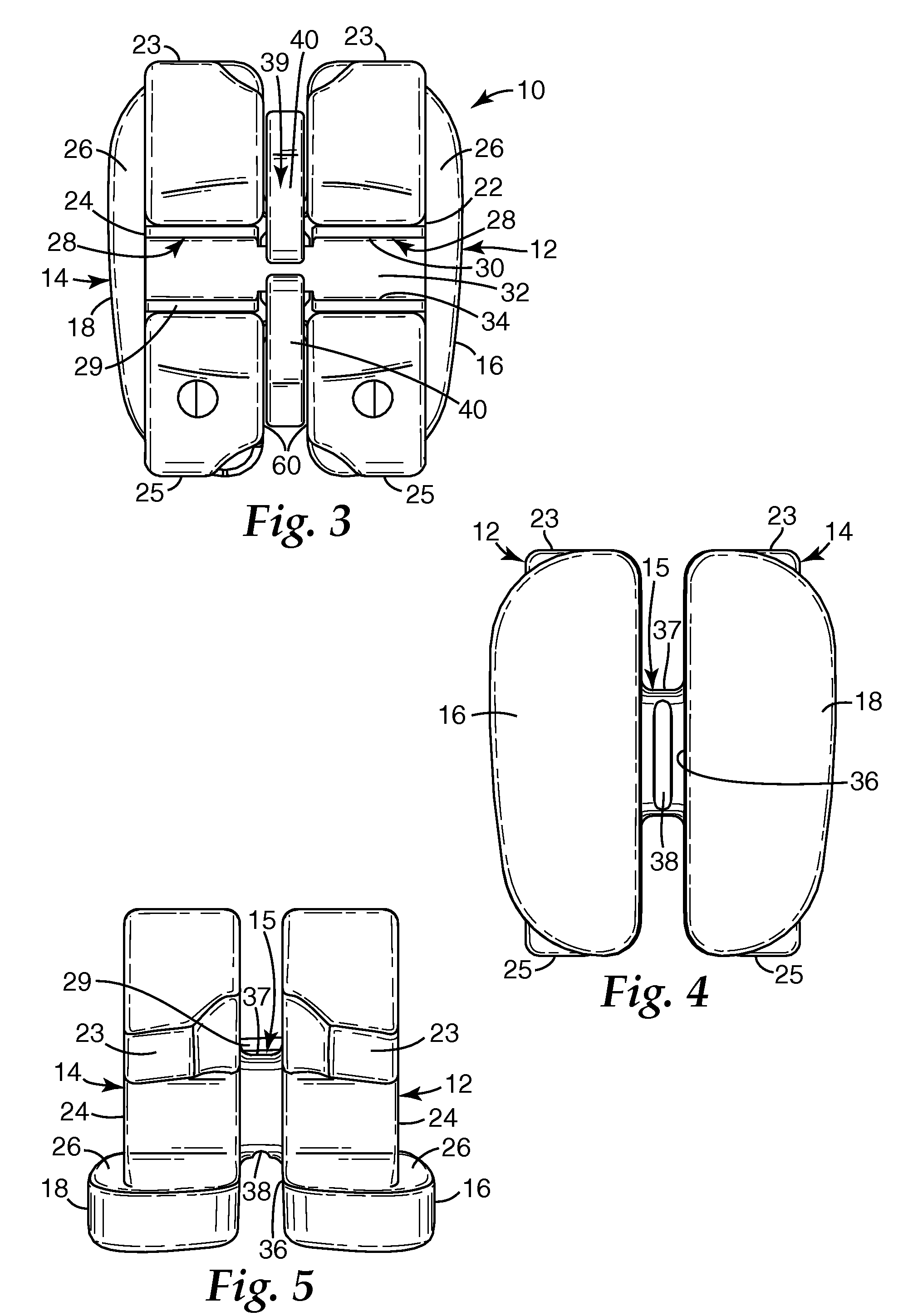Narrow ceramic self-ligating orthodontic bracket
a ceramic and bracket technology, applied in the field of ceramic self-ligating orthodontic brackets, can solve the problems of collisions (or interferences), problems such as problems, and problems, and achieve the effects of reducing mesial-distal width, reducing mesial-distal width, and alleviating potential interference between adjacent brackets during bonding
- Summary
- Abstract
- Description
- Claims
- Application Information
AI Technical Summary
Benefits of technology
Problems solved by technology
Method used
Image
Examples
Embodiment Construction
[0029]An exemplary bracket in accordance with one embodiment of the invention is shown in FIGS. 1-3, and broadly designated by the numeral 10. This particular bracket is adapted to be bonded to the facial surface of a lower anterior tooth of a patient. Alternative embodiments may include brackets designed for bonding to other teeth in the mouth such as cuspids or bicuspids, and molars. Embodiments including buccal tubes or any other type of appliance capable of receiving an archwire for controlling movement of teeth during orthodontic treatment are possible as well.
[0030]The bracket 10 includes mesial section 12 and distal section 14, connected to each other by bridge section 15 (visible in the cross-sectional view of FIG. 2). Mesial section 12 and distal section 14 include mesial base 16 and distal base 18, respectively, that are adapted for bonding bracket 10 directly to the tooth of a patient by means of a suitable adhesive. Preferably the bottom surfaces of mesial base 16 and di...
PUM
 Login to View More
Login to View More Abstract
Description
Claims
Application Information
 Login to View More
Login to View More - R&D
- Intellectual Property
- Life Sciences
- Materials
- Tech Scout
- Unparalleled Data Quality
- Higher Quality Content
- 60% Fewer Hallucinations
Browse by: Latest US Patents, China's latest patents, Technical Efficacy Thesaurus, Application Domain, Technology Topic, Popular Technical Reports.
© 2025 PatSnap. All rights reserved.Legal|Privacy policy|Modern Slavery Act Transparency Statement|Sitemap|About US| Contact US: help@patsnap.com



